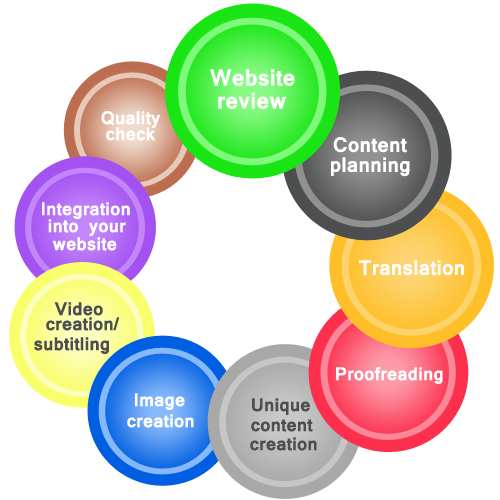WEBSITE LOCALIZATION: Hurdles, challenges, and the way forward
Welcome to the first article in our series on website localization, where we’ll be offering an insider view into this fascinating world.
A website is the most important element of online presence for many—if not all—businesses. Its main purpose is to deliver content that is relevant and interesting for readers. The way that people search for content is also changing at an ever faster pace, so websites must be maintained and optimized to meet the demands of this rapidly evolving online environment.
Nowadays, people search online for almost everything—just think about how many times a day you tap a query into your browser. It’s pretty straightforward from that angle, but how can you ensure that your content, your website, will be the one people are most likely to click on?
It’s one thing when you’re focused on interacting with or selling to your local audience, for example setting up a website for a fashion line based in your home country. Things get trickier when your target market is an audience with whom you’re not familiar. That’s when website localization becomes necessary. You have to ensure that your target audience never feels out of place when using your website; instead your site must provide a comparable experience to other local online options.
Have you ever wondered how this localization process works? The first step involves sharing lots of specific information that will help to ensure efficiency at all stages of the localization process. Unfortunately, some clients may be unfamiliar with the concept of localization or with the difference between translation and localization and may simply say: “Here’s my website, and I need a Finnish version and a Latvian one, too, thanks.” At this point, a good localization provider will start asking more questions. Avoiding guesswork by establishing a close working relationship with the client adds value and enables the provider to deliver well-localized content.

Clients often provide content for localization in various text files. The associated copy-and-paste process is incredibly time-consuming for the client, especially if their content management system is complex and the content includes many elements. Additionally, this is a manual process, so there is more room for errors.
Sometimes, clients prefer providers to handle the copying and pasting; this is often an expensive and dull procedure.
And if you think the process of getting the content out sounds tedious, returning the localized version for publication on the website is even more so, as the margin for error is twice as big. The key concern now is about placing each piece of localized content in the exact spot so that it fits perfectly. Any error here throws everything else out of alignment, and is definitely to be avoided.
What about other options? Janus Worldwide, for example, offers a solution that can handle any web-based applications and localize any formats, including .html, .xml, .php, and .json. The advantage is that most of the steps in the localization process are automated, resulting in fewer errors, faster deliveries, lower expenses and easier optimization.

Another reason why the localization process can be complex is that it essentially involves ensuring that the website provides a familiar local experience to the target audience, rather than merely translating the words on the original website. As you can imagine, it’s hard to create a truly local experience using simply MS Word or TXT. How can these challenges be overcome to make sure you get the excellent localization service you deserve? Find out in the next installment of this series.
____________________________________________________________________________________
As a client looking to get your website fully localized, you’re entitled to the best results possible. Talk to Janus Worldwide to see how our expertise can deliver the outcome your business needs.





